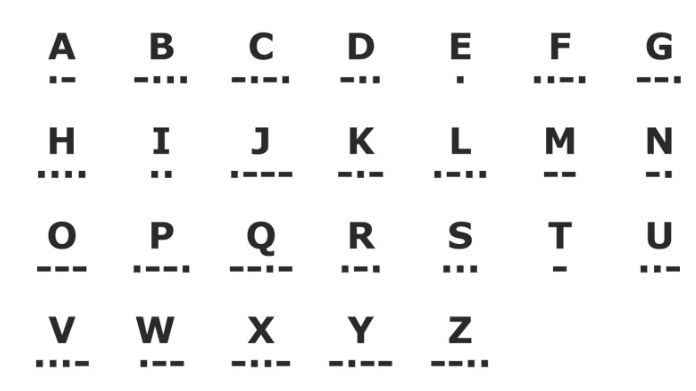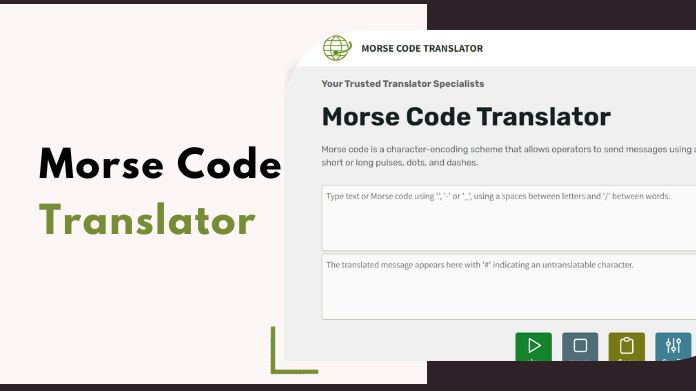In the vast tapestry of communication, where words and messages flow through the airwaves and across screens, one age-old method has stood the test of time for its simplicity and efficiency—Morse code.
The rhythmic arrangement of dots and dashes that characterizes Morse code has a rich history and, at its heart, a tool that facilitates its deciphering—the Morse Code Translator.
This Morse Code Translator guide embarks on a journey into the world of Morse code, exploring its origins, the intricacies of its language, and the important role played by the Morse Code Translator in bridging the gap between cryptic signals and meaningful messages.
The Origins of Morse Code

Morse code, named after its inventor Samuel Morse, has roots that trace back to the early 19th century. Initially developed for telegraphy, this method of encoding alphanumeric characters and punctuation using dots and dashes revolutionized long-distance communication.
At its core, Morse code communicates through sequences of short and long signals, commonly known as dots and dashes. Each letter and numeral has a unique combination, creating a succinct and universally understood language. Deciphering Morse code relies on recognizing these patterns.
What is the Morse Code Alphabet?
A Morse code translator serves as a bridge between the coded language and readable text. It converts the dots and dashes into letters, enabling efficient communication. The translator’s interface typically consists of input options for manual entry or automated conversion.
Manual Vs Automated Translation
In manual translation, users input Morse code symbols through various means, such as a telegraph key or flashlight. Automated translators, on the other hand, leverage technology to swiftly convert Morse code into readable text, making the process accessible to a broader audience.
What is a Morse Code Translator?

A Morse Code Translator is a tool or device that converts text into Morse code. Morse code encodes text characters using sequences of dots and dashes to represent each letter, numeral, or punctuation mark. The translator simplifies encoding or decoding messages in Morse code, making it more accessible and efficient for users.
The translator typically features an interface where users can manually input text or Morse code, and the tool will generate the corresponding Morse code or text output.
Some translators also offer automated conversion, where users can type or paste text, and the tool instantly converts it into Morse code or translates Morse code back into readable text.
Morse Code Translators serve various purposes, from educational tools for learning Morse code to practical applications in emergency communication.
They play an essential part in bridging the gap between the simplicity of Morse code and the convenience of modern communication methods, making Morse code accessible in today’s digital age.
Applications of Morse Code Translators
Beyond historical telegraphy, Morse code translators find utility in diverse fields. They serve as educational tools, aiding enthusiasts in learning Morse code. They also play a role in emergency communication, where Morse code’s simplicity is invaluable.
Morse code’s enduring relevance lies in its historical significance and continued use in amateur radio, aviation, and specific military applications. Learning Morse code enhances communication skills and fosters an appreciation for a timeless encoding form.
The digital age has brought Morse code translation to our fingertips. Online Morse code translators offer quick and convenient ways to convert text to Morse code. These tools cater to beginners and seasoned enthusiasts, promoting accessibility and ease of use.
Challenges and Considerations
While Morse code translators simplify the decoding process, challenges persist. Variations in interpretation and the need for precise timing underscore the importance of a reliable translator and a basic understanding of Morse code principles.
Preserving a Timeless Language
Morse code retains its allure in an era dominated by instant messaging and cutting-edge communication technologies. Its simplicity, efficiency, and historical significance ensure its continued relevance, with Morse code translators acting as bridges between the past and the digital age.
Conclusion
The Morse code translator, a digital companion to an age-old form of communication, encapsulates the enduring legacy of Morse code.
As we navigate the intricacies of dots and dashes, we unveil not just a method of communication but a testament to the resilience of simplicity in the ever-evolving tapestry of human connection.
Whether employed for educational pursuits, emergency scenarios, or the sheer joy of deciphering a coded message, the Morse code translator is a gateway to a linguistic art form that transcends time and technological advancements.
